Reading Time: 8 minutes

Addiction – clinically known as substance use disorder (SUD) – is a chronic mental health condition that impacts millions of Americans. Most people need some form of professional help in order to overcome addiction. For some, that might be a rehab treatment center. For others, that might be medication assisted treatment or certain forms of addiction therapy.
In order to understand the true scope of addiction in America, it’s helpful to evaluate the numbers. Addiction statistics can show us how certain substances are impacting different parts of the country, how new addiction treatment options are working (or not working), and what we need to do better in order to save more lives.
Looking at addiction statistics across America also says something to every single person currently struggling with substance abuse: you are not alone.
Statistics on Addiction
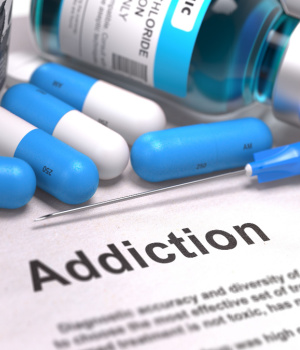 In the U.S., we fought the “war on drugs” in the 80s. We saw the first wave of the opioid epidemic in the 90s. And in the last decade, we saw cannabis legalized in many states.
In the U.S., we fought the “war on drugs” in the 80s. We saw the first wave of the opioid epidemic in the 90s. And in the last decade, we saw cannabis legalized in many states.
So, where are we now? What do addiction numbers look like across the nation?
Addiction affects a person’s thoughts, emotions, actions, and physical health. According to a Gallup report, addiction now impacts half of all American families.
- 2 million Americans have a substance use disorder.
- 9 million Americans aged 12 and older are current illegal drug users.
- 1 in 10 people who have an SUD get the treatment they need.
- 20 percent of people struggling with addiction don’t know where to turn for help.
- 50 percent of the people who experience an SUD also experience a co-occurring mental disorder.
Statistics on Overdose
Overdose numbers have reached epidemic proportions in recent years.
- Drug overdose deaths are up 30 percent year-over-year.
- Over 96,700 Americans died from drug overdoses between March 2020 and March 2021.
- The opioid fentanyl caused drug overdose deaths to nearly double for U.S. teens.
- Opioids are involved in 72 percent of overdose deaths.
- Drug overdoses have killed almost 1 million people since 1999.
- Comparing states, Maryland sees the highest overdose death rate in the nation, while Nebraska sees the lowest.
Statistics on the Cost of Rehab
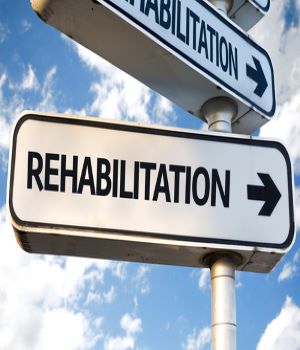 The cost of rehab may discourage people from getting the help they need. But for those who are concerned about paying for rehab, options are available. These include: state-funded programs, grants from the Substance Abuse and Mental Health Services Administration (SAMHSA), use of Medicare or Medicaid benefits, coverage under the Affordable Care Act, and options for Veterans from the U.S. Department of Veterans Affairs.
The cost of rehab may discourage people from getting the help they need. But for those who are concerned about paying for rehab, options are available. These include: state-funded programs, grants from the Substance Abuse and Mental Health Services Administration (SAMHSA), use of Medicare or Medicaid benefits, coverage under the Affordable Care Act, and options for Veterans from the U.S. Department of Veterans Affairs.
- The average cost of drug rehab is $13,475.
- Medical detox programs cost $1,750 or more.
- Inpatient rehabilitation programs cost $6,000 per month or more.
- Outpatient rehab costs $5,000 or more for a three-month program.
- 443 facilities in the U.S. offer free treatment for all rehab patients.
Statistics on Alcohol Addiction and Abuse
In total, 95,000 Americans die from the effects of alcohol use every year. Being legal for purchase to anyone over the age of 21, alcohol is the most commonly abused in the United States. However, many alcohol use disorders are left untreated.
- Nearly 15 million Americans have an alcohol use disorder (AUD).
- Only about 7% of those with an AUD get treatment.
- Around 30 people in the U.S. die every day in drunk-driving car accidents.
- There are 2,200 alcohol poisoning deaths in the U.S. each year.
- About 25% of Americans aged 18 and older report binge drinking in the past month.
Statistics on Opioid Addiction and Abuse
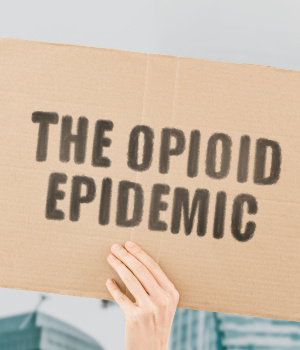 In 2017, the Health Department declared the opioid crisis in America a public health emergency. Growing numbers of addiction and overdose in recent years has created an opioid epidemic in the United States.
In 2017, the Health Department declared the opioid crisis in America a public health emergency. Growing numbers of addiction and overdose in recent years has created an opioid epidemic in the United States.
- Over 1 million Americans have an opioid use disorder (OUD).
- Over 10 million Americans misuse opioids each year.
- Nearly 50,000 people in the U.S. die every year from opioid overdose.
- Up to 80% of overdose deaths in the U.S. involve opioids.
- Overdose deaths involving opioids increased over 500% between 1999 and 2019.
Statistics on Prescription Drug Addiction and Abuse
Prescription drugs are extremely common in the United States. In fact, nearly 46% of American adults used a prescription drug in the past month. Some did so in a healthy way – but many did not.
- 3 million Americans misuse prescriptions every year.
- 12% of prescription drug abusers are addicted.
- 52 million (18.4%) of Americans over age 12 have deliberately misused prescription drugs at least once.
- Women are 11% more likely than men to be prescribed medication, but men are nearly 23% more likely to misuse prescriptions.
- 62% of teenagers who abuse prescription drugs say they do it because the drugs are easy to get from parents’ medicine cabinets.
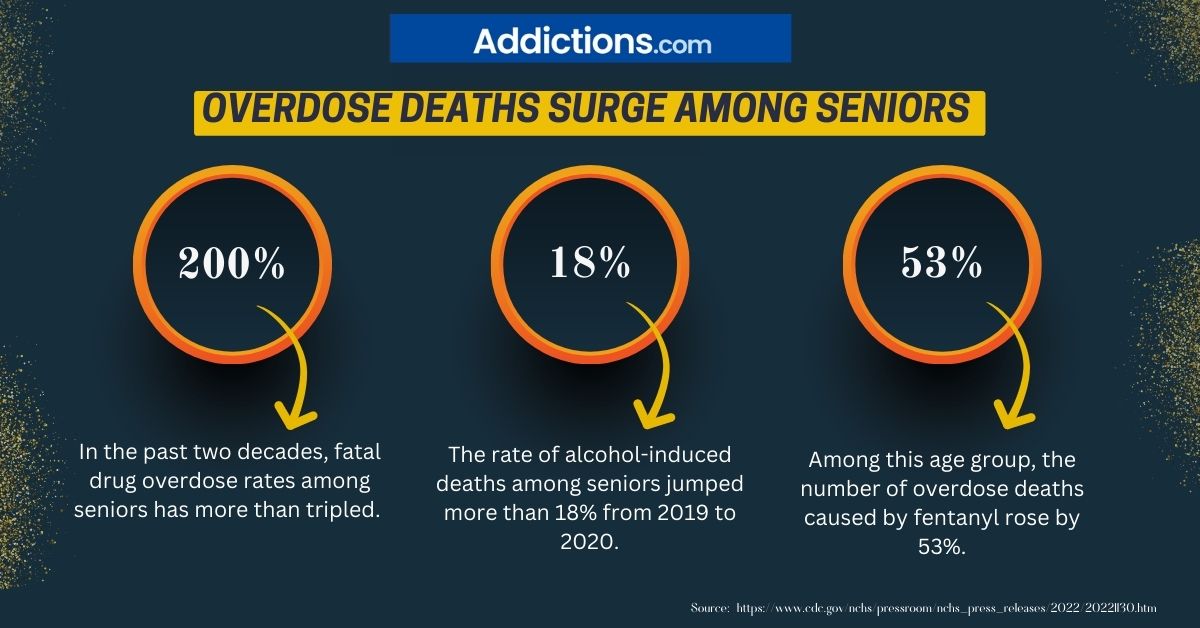
Statistics on Heroin Addiction and Abuse
Heroin is a specific type of opioid. It is semi-synthetic, meaning it’s made from morphine (a natural substance), but it has gone through chemical processing. It is highly addictive and extremely harmful to the user’s health. Heroin is typically injected, snorted, or smoked. After just one use, heroin addiction can develop for some people.
- An estimated 691,000 Americans have a heroin use disorder.
- In 2020, over 13,000 Americans died from an overdose involving heroin.
- Among Americans 12 or older, about 902,000 report using heroin in the past year.
- About 117,000 Americans try heroin for the first time each year.
- Around 77,000 8th graders reported using heroin in the past year.
Statistics on Marijuana Addiction and Abuse
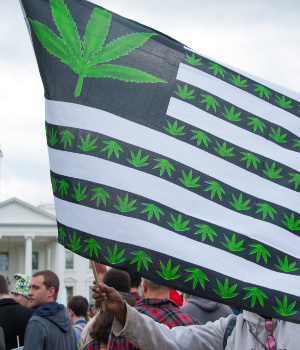 Marijuana is made from the cannabis plant and contains a mind-altering chemical called THC. The drug remains a controversial topic in America, as many states have legalized its recreational use, but, under federal law, the use and possession of cannabis is illegal for any purpose. It also remains one of the most commonly used drugs in America – a little less than half of Americans (that’s 78 million people) report they have used marijuana at some point in their lives.
Marijuana is made from the cannabis plant and contains a mind-altering chemical called THC. The drug remains a controversial topic in America, as many states have legalized its recreational use, but, under federal law, the use and possession of cannabis is illegal for any purpose. It also remains one of the most commonly used drugs in America – a little less than half of Americans (that’s 78 million people) report they have used marijuana at some point in their lives.
- About 5 million Americans have marijuana use disorder.
- Nearly 17% of Americans currently use marijuana.
- 24% of 12-graders have used marijuana in the past year.
- 13% of young marijuana users become dependent on the drug.
- Marijuana can negatively affect mental abilities, with regular use at a young age causing a drop of up to 8 IQ points.
Statistics on Nicotine Addiction and Abuse
The number of Americans who smoke cigarettes has declined in recent years. In 2005, 20.9% of Americans smoked, but by 2020, that number had dropped to 12.5%. Still, nicotine addiction is prevalent throughout the country, and cigarette smoking remains the leading cause of preventable disease, disability, and death in the United States.
- 8 million Americans currently smoke cigarettes.
- Cigarette smoking causes more than 480,000 deaths in the U.S. each year.
- More than 16 million Americans live with a smoking-related disease.
- More people smoke in the Midwest and South than in the West.
- About 25% of U.S. youth and young adults have tried e-cigarettes.
Statistics on Cocaine Addiction and Abuse
Cocaine is a highly addictive stimulant made from the coca plant. It usually looks like a fine, white powder, but it can also be cooked down into a crystal form (called crack cocaine). Every year, cocaine addiction causes of thousands of overdoses and emergency room visits around the United States.
- About 3 million Americans have a cocaine use disorder.
- More than 5 million Americans report using cocaine in the past year.
- In 2020, over 19,000 Americans died from an overdose involving cocaine.
- Each year, 874,000 Americans try cocaine for the first time.
- An estimated 2 million Americans age 12 and over have used crack cocaine at least once.
Statistics on Meth Addiction and Abuse
 Methamphetamine, commonly referred to as meth, is a synthetic stimulant. It is highly addictive and causes severe health risks. The drug speeds up the body’s systems, which can lead to cardiovascular distress, stroke, or death.
Methamphetamine, commonly referred to as meth, is a synthetic stimulant. It is highly addictive and causes severe health risks. The drug speeds up the body’s systems, which can lead to cardiovascular distress, stroke, or death.
- Around 5 million people in the U.S. have a meth use disorder.
- Between 2015 and 2019, the number of Americans who said they “used meth often” rose 66%.
- Deaths from meth overdoses in the U.S. nearly tripled between 2015 and 2019.
- In 2020, nearly 24,000 Americans died from an overdose involving psychostimulants (primarily meth).
- About 500 Americans try meth for the first time every day.
Statistics on Hallucinogen Addiction and Abuse
Hallucinogens are a group of drugs that alter perceptions. They cause sensations that seem real but are not. Some of the most commonly used hallucinogens are LSD, MDMA (ecstasy), and hallucinogenic mushrooms.
- About 372,000 Americans have a hallucinogen use disorder.
- In 2020, about 1 million Americans reported using hallucinogens in the past year.
- 6% of high school students have used a hallucinogen at least once.
- 1% of 12th graders reported using a hallucinogen in the past year.
- A greater percentage of young adults – ages 18-25 – use hallucinogens, compared to adolescents or adults who are 26 and older.
Statistics on Inhalant Addiction and Abuse
Inhalants include solvents (paint thinner, shoe polish, glues), aerosols (spray paints, hair spray), gases (butane, propane), and nitrites (deodorizers). Using inhalants is referred to as “huffing,” and can lead to fatal heart failure within minutes. It can also lead to addiction.
- About 215,000 Americans have an inhalant use disorder.
- In 2020, about 4 million Americans reported using inhalants in the past 12 months.
- The percentage of inhalant use is highest among adolescents aged 12 to 17 (2.7%).
- The percentage of inhalant users decreases with age.
- 100-200 inhalant-related deaths occur in the U.S. each year.
REFERENCES
10 percent of US adults have drug use disorder at some point in their lives. (2015, November 18). National Institutes of Health (NIH). https://www.nih.gov/news-events/news-releases/10-percent-us-adults-have-drug-use-disorder-some-point-their-lives
Alcohol and your health sharable graphics | CDC. (2022, April 18). Centers for Disease Control and Prevention. https://www.cdc.gov/alcohol/onlinemedia/social-media.htm?CDC_AA_refVal=https%3A%2F%2Fwww.cdc.gov%2Falcohol%2Fonlinemedia%2Fbadges.html
Alcohol facts and statistics. (n.d.). National Institute on Alcohol Abuse and Alcoholism (NIAAA) | National Institute on Alcohol Abuse and Alcoholism (NIAAA). https://www.niaaa.nih.gov/publications/brochures-and-fact-sheets/alcohol-facts-and-statistics
Average cost of drug rehab [2022]: By type, state & more. (2022, April 6). NCDAS. https://drugabusestatistics.org/cost-of-rehab/
Friedman, J. (2022). Trends in drug overdose deaths among US adolescents, January 2010 to June 2021. JAMA, 327(14), 1398–1400. https://doi.org/10.1001/jama.2022.2847
Changes in adult alcohol use and consequences during the COVID-19 pandemic in the US. (n.d.). JAMA Network | Home of JAMA and the Specialty Journals of the American Medical Association. https://jamanetwork.com/journals/jamanetworkopen/fullarticle/2770975
Drug overdose death statistics [2022]: Opioids, fentanyl & more. (2022, April 6). NCDAS. https://drugabusestatistics.org/drug-overdose-deaths
The high price of the opioid crisis, 2021. (n.d.). The Pew Charitable Trusts | The Pew Charitable Trusts. https://www.pewtrusts.org/en/research-and-analysis/data-visualizations/2021/the-high-price-of-the-opioid-crisis-2021
Illicit opioid graphics. (2021, June 28). Centers for Disease Control and Prevention. https://www.cdc.gov/drugoverdose/resources/graphics/illicit-opioid.html
Substance Abuse and Mental Health Services Administration. (2021). Key substance use and mental health indicators in the United States: Results from the 2020 National Survey on Drug Use and Health (HHS Publication No. PEP21-07-01-003, NSDUH Series H-56). Rockville, MD: Center for Behavioral Health Statistics and Quality, Substance Abuse and Mental Health Services Administration. Retrieved from https://www.samhsa.gov/data/
Monitoring the future. (2022, June 7). National Institute on Drug Abuse. https://nida.nih.gov/research-topics/trends-statistics/monitoring-future
Drug abuse statistics (2022, June 18). NCDAS. https://drugabusestatistics.org/
NIH study finds alcohol use disorder on the increase. (n.d.). National Institute on Alcohol Abuse and Alcoholism (NIAAA) | National Institute on Alcohol Abuse and Alcoholism (NIAAA). https://www.niaaa.nih.gov/news-events/news-releases/nih-study-finds-alcohol-use-disorder-increase
Overdose graphics. (2022, June 2). Centers for Disease Control and Prevention. https://www.cdc.gov/drugoverdose/resources/graphics/overdose.html
Prescribing graphics. (2021, November 10). Centers for Disease Control and Prevention. https://www.cdc.gov/drugoverdose/resources/graphics/prescribing.html
Products – Vital statistics rapid release – Provisional drug overdose data. (2022, July 5). Centers for Disease Control and Prevention. https://www.cdc.gov/nchs/nvss/vsrr/drug-overdose-data.htm
Substance use issues are worsening alongside access to care. (2021, August 13). KFF. https://www.kff.org/policy-watch/substance-use-issues-are-worsening-alongside-access-to-care/
Tusaie-BC, K., & Fitzpatrick, J. J. (2022). Advanced practice psychiatric nursing: Integrating psychotherapy, psychopharmacology, and complementary and alternative approaches across the life span (3rd ed.). Springer Publishing Company.

